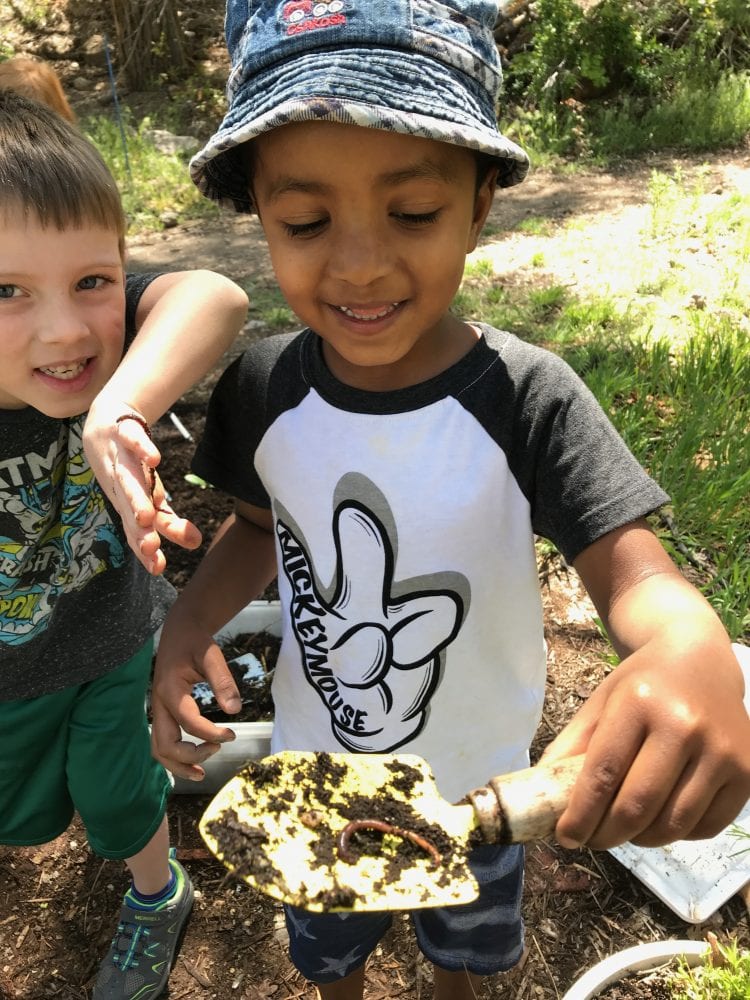
Since many of us are spending so much time at home, we’re spending more time than usual staring at the state of our homes and gardens. For some of you, your gardens are getting nervous, wondering what’s in store for them this year!
Whether you have a prizewinning garden, or can hardly even keep your weeds alive, gardening is a sensory experience, a never-ending puzzle, and can be a great way to spend some quality time outside at your own house.
Blog Post:
Natali Steinberg, a veteran farmer who is now responsible for the gardens at the senior facility where she lives, not to mention the beautiful native plant bed at the Los Alamos Nature Center, shares some of her tips for a successful spring garden.
Craft
Creating painted stone plant labels are a great way for kids to help out in the garden. Start by finding small rocks outside. Then, let kids paint them different colors, representing the plants you hope to include in your garden. Add details with a Sharpie or paint them to make a face!
Don’t have a garden? You can paint stones to look like different insects, creatures, designs, or inspiring words, and then place them in potted plants, or use them as decorations around your house and yard.
Find detailed instructions here.
Outdoor Challenge (Beginner):


Soil is the foundation of your garden. Did you know that soil contains both biotic (living) and abiotic (nonliving) components, and that these parts work together to support plant growth? Go outside and gather a container of soil. Try to find the following parts, using a magnifying glass if you have one:
- Pieces of rock of different sizes
- Sticks, leaves, and other plant matter
- Insects or worms
- Air pockets
- Water (can you feel any dampness?)
After you’ve examined your soil, try this experiment: pour a scoop of soil into a transparent container with a lid. Fill the rest of the container with water. Close the lid, and shake the soil thoroughly. Watch what happens as the soil settles. Draw the layers you see.
For more about the parts of soil, check out the book Dirt: The Scoop on Soil by Natalie Rosinsky. From the publisher’s site you can read it online or have it read to you!
Outdoor Challenge (Advanced):
There’s so much more happening in soil than meets the eye. Many gardeners add organic matter to their soil to improve nutrient content and water absorption, among other benefits. Learn more about different garden soil types here and how to test your soil in this video. Take a closer look at the organic matter in your soil, or in the soil in a favorite natural area. Many of the components are too small to see with your naked eye, but try to find the following:
- Living organisms (including earthworms, arthropods, and fungi)
- Recently dead plant material
- Actively decomposing material
- Humus, the “end product” of decomposition, which makes soil black
- Evidence of organisms eating other organisms
To learn more about the fascinating soil system, see the National Resources Conservation Service’s page about the Soil Food Web.
Other Resources:
- KidsGardening.org provides a variety of activity suggestions to help get your kids outside, gardening. Check out their activity suggestions here.
- The Los Alamos EcoStation offers a variety of landscaping materials to Los Alamos County residents. Learn more about what they offer here. Due to COVID-19, the EcoStation is operating on reduced operating hours. Please call in advance if you plan to stop by for landscaping materials. The EcoStation also sells backyard composters if you want to get started at home.
- If you live in other parts of the state, Reunity Resources in Santa Fe and Soilutions in Albuquerque both sell compost.
- Support your local growers by joining a community supported agriculture (CSA) program or shopping at your farmer’s markets. Visit the New Mexico Farmers’ Market Association’s website for help finding a CSA or market near you.
Share Your Experience:
Tell us how you like to enjoy nature! We’d love to see your photos, too. Please send them to takeitoutside@peecnature.org or share them on Facebook or Instagram with the hashtag #peectakeitoutside.
Join us tomorrow to learn about creating art in nature!
